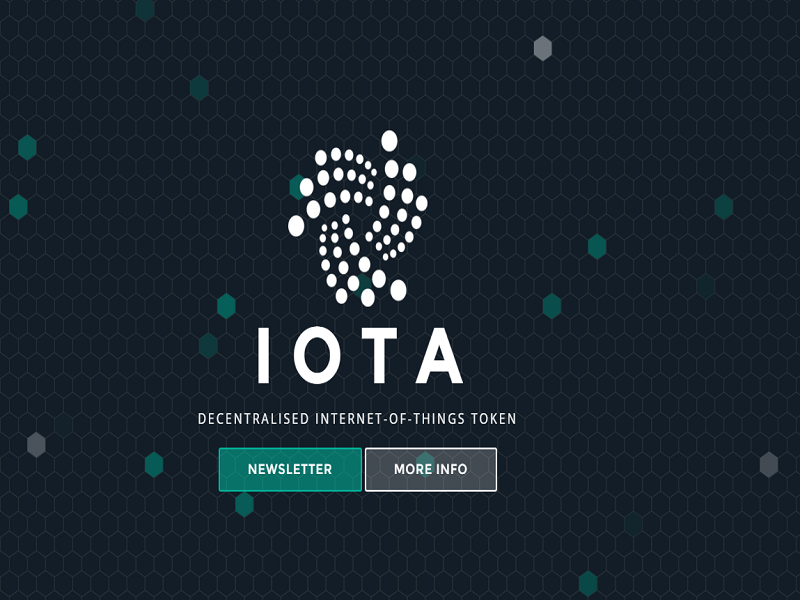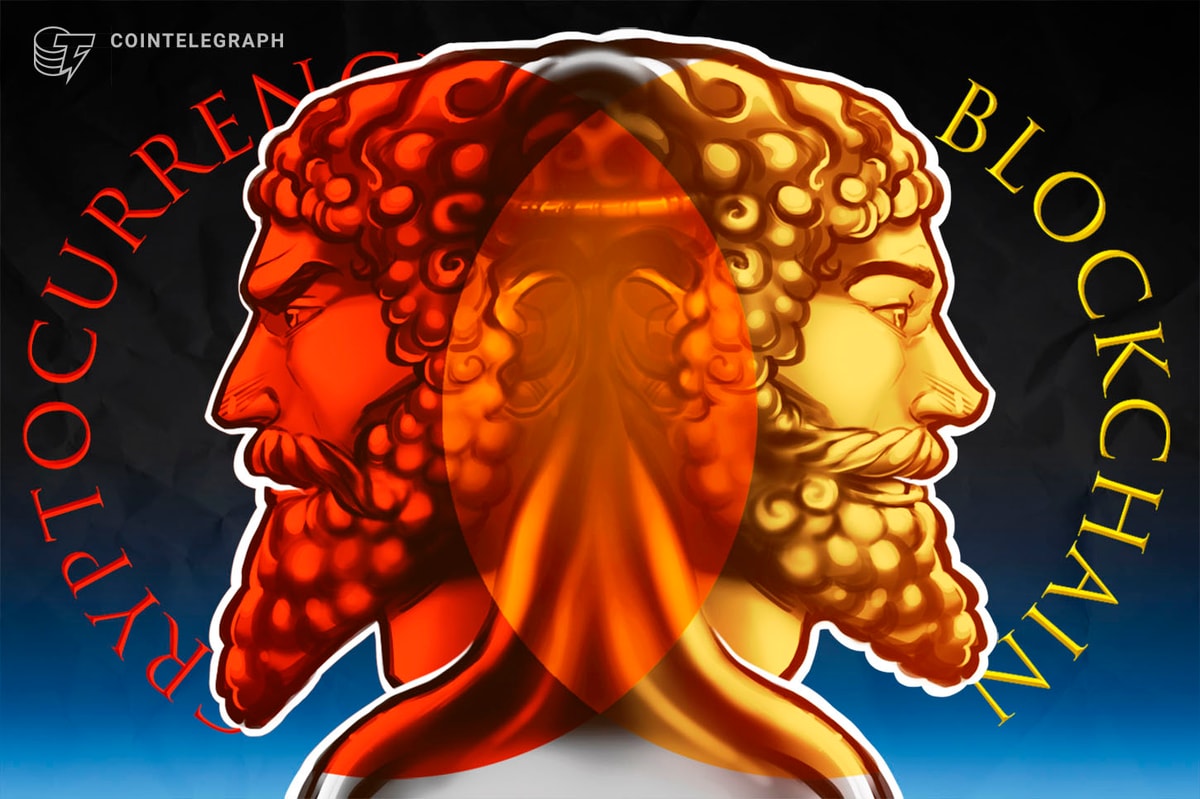There are many interesting projects taking place in the world of digital currency right now. IOTA is a project that will serve as a decentralized token for the Internet of Things ecosystem, built on top of “Tangle,” rather than a blockchain. The project looks very interesting, as the Internet of Things is becoming more popular all over the world. But how will this mix of connected devices and micropayments work exactly?
Also read: Ledger Introduces the BOLOS and TEES Platforms
Learning More About IOTA
The IOTA project is designed to create a secure and decentralized financial ecosystem for the Internet of Things. As more and more devices will be able to communicate with each other, payments will start playing a role at some point. A decentralized cryptocurrency seems to fit the bill nicely when it comes to making micropayments.
However, IOTA is quite different from Bitcoin and Ethereum, as it uses no blockchain. Instead, it uses “Tangle“, a Directed Acyclic Graph shaping up a tangle. Once an IOTA transaction is broadcasted to the network, two previous transactions must be approved, and network nodes will need to make sure approved transactions are not conflicting. This is a different way tot tackle the threat of double-spends with virtual currencies.
Additionally, blockchains are not suited to make micro-payments. Tangle will allow IOTA to be efficient, scalable, and lightweight. However, IOTA can communicate to blockchains, which allows for future collaboration between the Internet of Things and established digital currencies. In fact, the IOTA project could even be used as an oracle to complete smart contracts.
We had a chance to sit down with IOTA’s David Sønstebø and conduct an exclusive interview with him to address some of the questions regarding the project.

JP Buntinx (JP): Which companies – other than coin projects – in the crypto world are you working with right now? That is, assuming there are any, and that you can disclose some information on that front. If not, why projects like Ethereum, GridCoin, and ElectricChain in particular?
David Sønstebø (DS): We are securing partnerships with some really interesting companies that will be unveiled in the near future.IOTA also just partnered with ChainOfThings (www.chainofthings.com) – an initiative started to explore how blockchain/tangle can be applied to ensure security in the ecosystem of Internet-of-Things. We are really excited to be a part of this project. One of the first major companies that IOTA will be partnering with is Microsoft. Microsoft’s Azure Blockchain as a Service program is a great testament to their dedication towards emerging technologies, and we are really excited to be a part of this adventure.
As for why we choose also to focus our collaborative efforts on the crypto-end toward communities and projects like Rootstock, GridCoin, ElectricChain and Ethereum is simply the fact that these are projects that are working towards real life solutions. Too many crypto projects are all about some esoteric political movement or flat out financial speculation; IOTA is not interested in this. IOTA is a very potent and effective technology that solves issues that are faced by IoT, first and foremost fee less, scalable transactional settlements and data transfer. AKA: machine-2-machine payments. Naturally we are very interested in collaborating with like-minded projects that want to get stuff done, not just sit around theorizing or watching price charts.
JP: What do you expect from the IOTA token in the next few years?
DS: It’s hard to predict what IOTA will evolve into over the coming months and years, there’s already some early stage development on adding functionality to something like sidetangles (equivalent to sidechains in regular blockchains) and interoperability with other projects (as mentioned). However, the main goal at the moment is to get IOTA to become a standard transactional settlement system in the emerging IoT m2m economy. Given that IOTA is currently the only project that solves the issue of scalability and fees without any ad hoc solutions that compromise the integrity of the security or decentral nature of the economy, I think this is a feasible expectation, provided that we get the momentum required to keep our position on the bleeding-edge.
JP: How do you see the evolution of payments, transactions, and communication evolve in the IoT sector?
DS: We already see some simple ‘pseudo-IoT’ payment systems like the Dash button of Amazon, and there is an overwhelming amount of focus on fridges that can order milk and so on. While these are certainly interesting, I don’t consider them game changers. When I think of IoT payments, I am mainly thinking in the terms of autonomous machine-2-machine transactions that enable technological resource trade. This includes computational power, storage, data, bandwidth, electricity and so on.
As IoT scales, we will see the emergence of what is called the ‘Fog,’ which is essentially a distributed ‘Cloud.’ The big Cloud data centers are simply located too far away from most IoT sensors and actuators, which will often require real-time analytics and decision making that is simply not possible with the latency from these Clouds located far away, not to mention network congestion and vulnerability. So the only solution is to put the infrastructure closer to the devices. When it comes to the absolute edge, we’ll approach what we call ‘Mist,’ where you literally have the computational/storage/whatever resource either embed into the device itself or in the extreme proximity of the device that needs this technological resource.
It’s first and foremost in this Fog and Mist realm where I see transactions in IoT grow exponentially while enabling completely new business models, services, and solutions. This will also be very reliant on interoperability. There is no way for one or even a handful of companies to cover all these different infrastructural demands, so there need to be formed cohesive business-2-business solutions, which again requires a compensation mechanism. This is where I believe IOTA is imperative. With IOTA, you can have this economy operate in real time, with out fees, without any central expensive and unreliable middle man bottleneck.
Other obvious areas are the sharing economy, first there was Uber and AirBnB, but soon there’ll be a sharing economy of everything from eBikes to power tools. I also see a role for this kind of payment be useful for real-time data from households and wearables where you sell your personal data in real time instead of filling out surveys.
But again for this to work seamlessly I believe that a decentralized transactional settlement protocol is absolutely needed, because a lot of these transactions will be real time based, meaning that they may just consist of a few cents, of course, doing this through central services would cause the fee to outweigh the actual transaction by several orders of magnitude. This is why dropping the fees is such a vital component of IOTA.
JP: What can users expect from the IOTA beta, and can they still sign up to participate? Or will it be available to everyone?
DS: Due to our decision to postpone the public beta until we had a GUI for it we ended up with a couple of unexpected delays, so we’ve been doing a lot of internal back-end testing together with the community. Due to this, we don’t anticipate the beta to last very long, only a couple of weeks since we have already ironed out kinks. The beta will be available for anyone that participated in the crowdsale and/or acquired IOTA through other means in the free market. However, I would encourage people to wait until the official launch post-beta to start buying IOTAs from people as you have no guarantee that there won’t be some kind of bug that requires a rollback of the Tangle, which means whoever sold you the tokens could screw you over.
We have already set up a community faucet, however, so if you want to test out IOTA, I am quite sure we can help you get started. Send us an email at [email protected] and we’ll invite you to our chat. Alternatively, you can visit forum.iotatoken.com. Follow our Twitter at www.twitter.com/iotatoken to stay up to date on the developments.
It appears as if the IOTA team is on the right track to merge the concept of virtual currency with the Internet of Things. We would like to thank David Sønstebø for taking the time to reach out to us and answer our questions at length.
What are your thoughts on the IOTA project so far? Is it a viable concept, or do you seem for improvements? Let us know in the comments below!
Images courtesy of Twitter, IOTA











